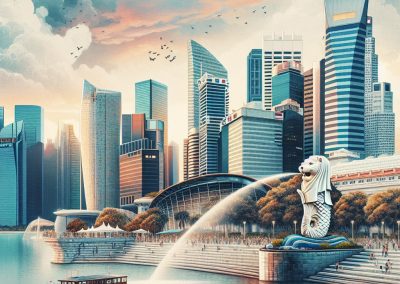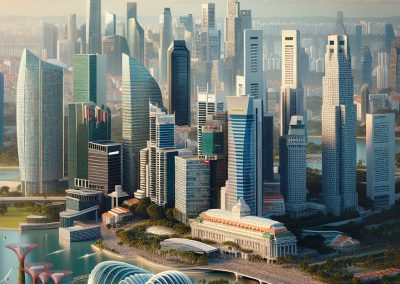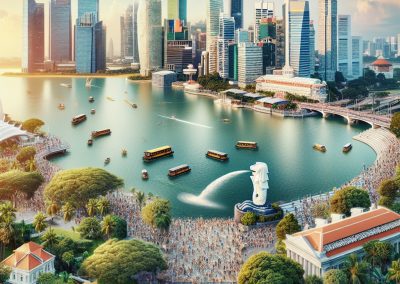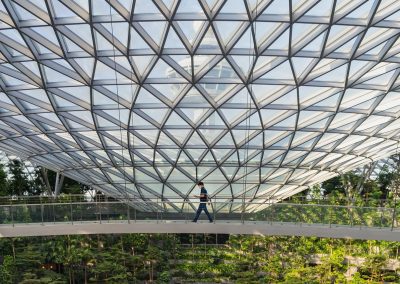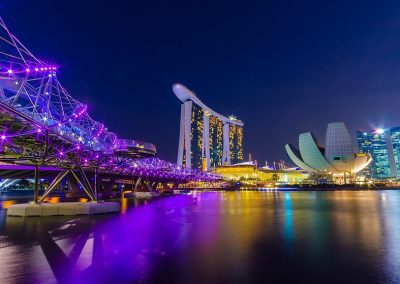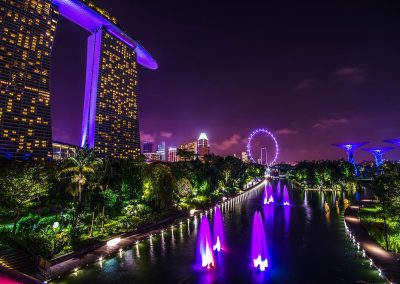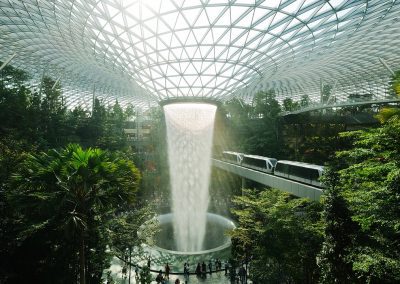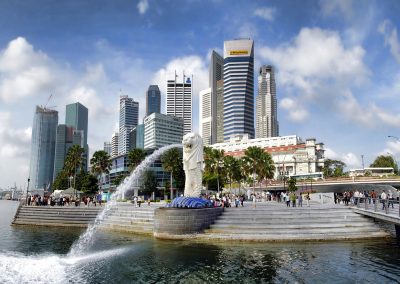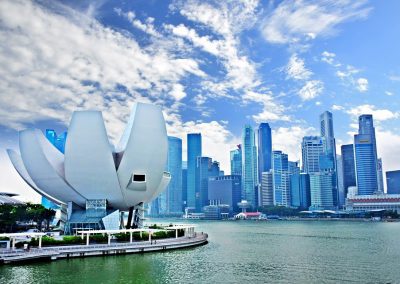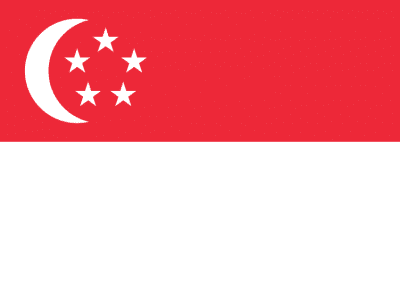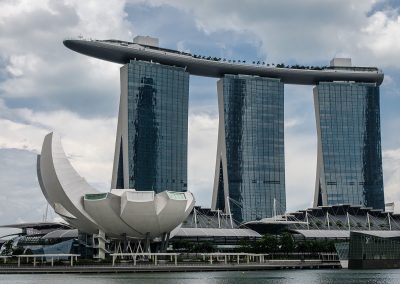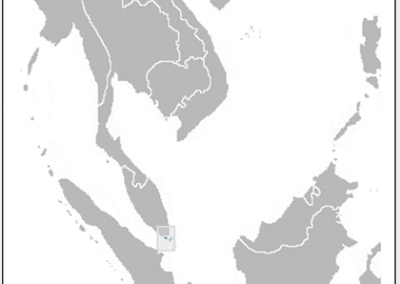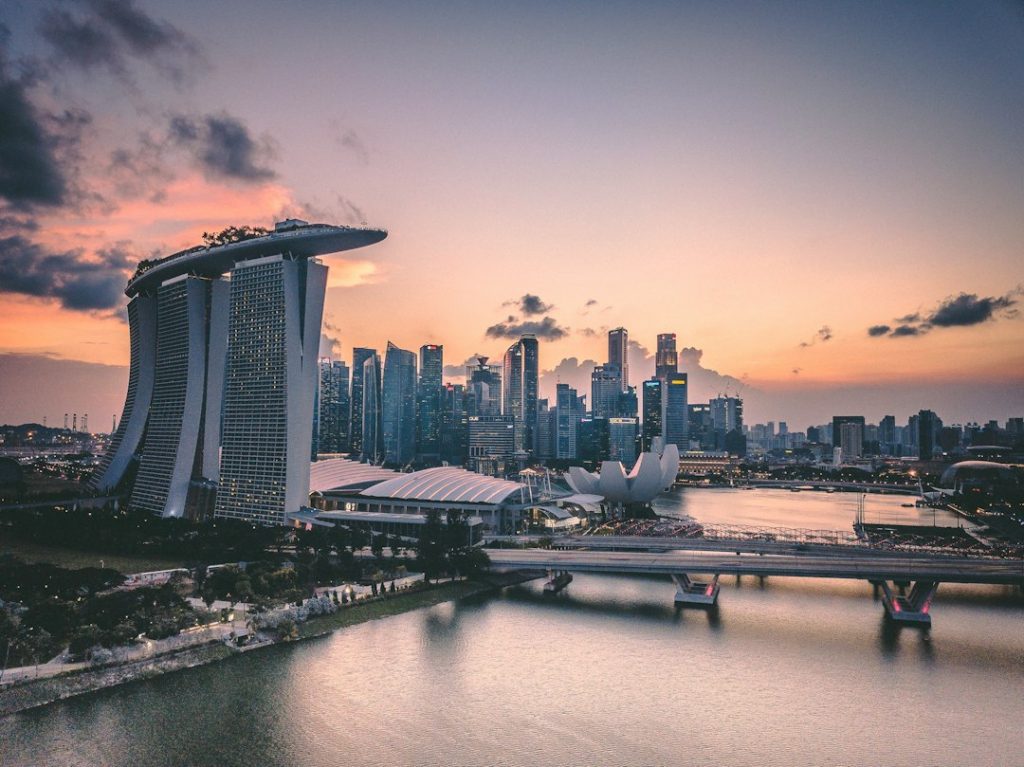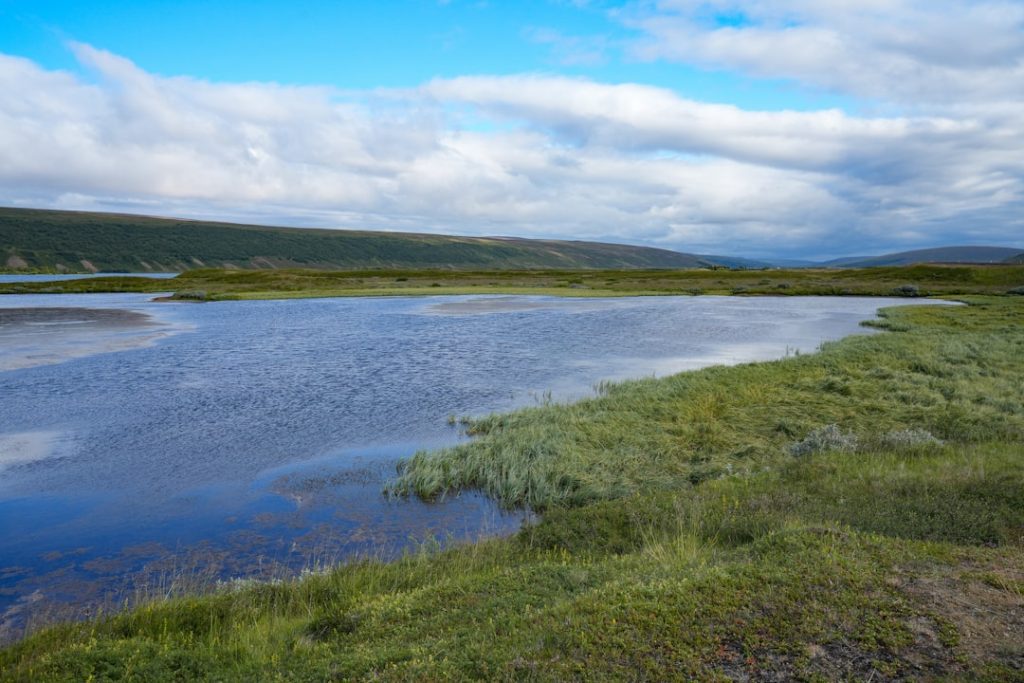Singapore
(Xinjiapo Gongheguo (Mandarin Chinese); Republik Singapura (Malay); Cingkappur Kudiyarasu (Tamil); Republic of Singapore (English))

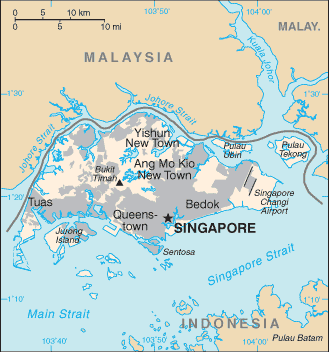


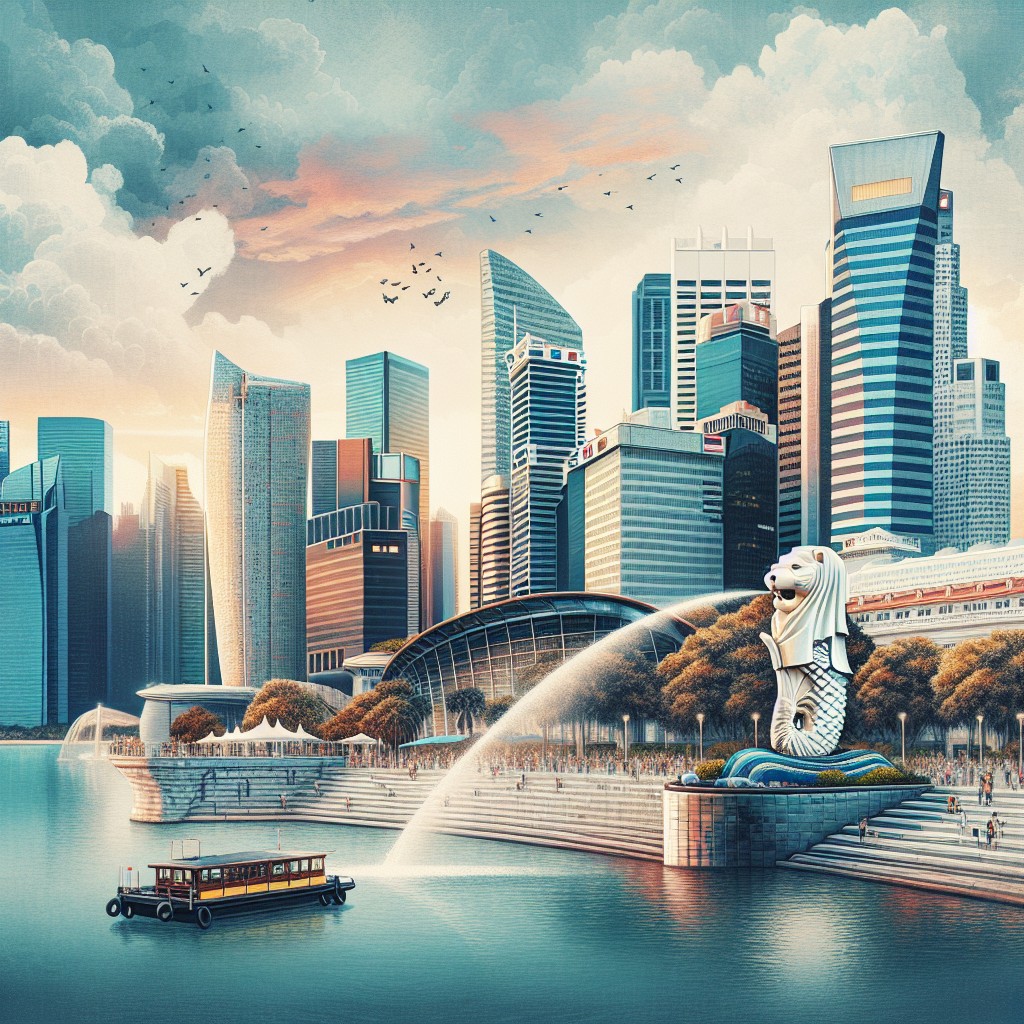

Capital: Singapore
Population (Estimated July 2012): 5,353,494
Area: 710.2km2 or 274.2mi2
Currency: Singapore Dollar (S$)
Official Language: Mandarin Chinese, Malay, Tamil and English
Political Information: Parliamentary Republic
Official Religion: No Official Religion
(approximately 42.5% of the population are Buddhist, 14.9% are Muslim, 14.8% have no religious beliefs, 14.6% have other Christian beliefs, 13.2% have other religious beliefs)
Highest Mountain: Bukit Timah (hill) at 166m or 545ft
GDP Official Exchange Rate (OER is more precise at gauging a country’s economic power)
(Estimated 2011): $266.5 billion (US$) or (GBP)
GDP (OER) Per Capita (per member of the population estimated 2011): (US$) or (GBP)
GDP Purchasing Power Parity (PPP is good for gauging living conditions and the use of resources but is not as accurate as OER. This data has been calculated based on the sum value of all goods and services produced in the country valued at prices prevailing in the United States)
(Estimated 2011): $314.2 billion (US$) or (GBP)
GDP (PPP) Per Capita (per member of the population estimated 2011): $59,900 (US$) or (GBP)
Time Zone (GMT/UTC): +8:00
Wildlife:
Counties/Provinces/States:
Leaders: President Tony Tan; Prime Minister Lee Hsien Loong
Additional: Gained independence from the Malaysian Federation on the 9th of August 1965
Sources: CIA World Fact Book, Encyclopaedia Britannica.
Singapore
Singapore, a vibrant city-state located at the southern tip of the Malay Peninsula, is renowned for its remarkable transformation from a modest trading post into a global financial hub. With a land area of just 728.6 square kilometres, it is one of the smallest countries in the world, yet it boasts a population of over 5.7 million people. This bustling metropolis is characterised by its unique blend of cultures, languages, and traditions, making it a microcosm of Asia.
The strategic location of Singapore along the Strait of Malacca has historically made it a crucial maritime trade route, facilitating commerce between the East and West. The nation’s rapid development is often attributed to its forward-thinking governance and robust economic policies. Since gaining independence in 1965, Singapore has embraced globalisation and innovation, positioning itself as a key player in international trade and finance.
The city-state is not only a melting pot of cultures but also a model of urban planning and sustainability, showcasing how a small nation can thrive in an increasingly interconnected world. The juxtaposition of modern skyscrapers with lush greenery exemplifies Singapore’s commitment to maintaining a balance between urbanisation and environmental conservation.
Summary
- Singapore is a vibrant and diverse city-state located in Southeast Asia, known for its modern skyline, rich history, and multicultural society.
- The history and culture of Singapore is influenced by various ethnic groups, including Chinese, Malay, Indian, and Eurasian, resulting in a unique blend of traditions and customs.
- Singapore has a highly developed and successful economy, with a focus on trade, finance, and technology, making it one of the wealthiest countries in the world.
- The city is home to a variety of attractions and landmarks, such as Marina Bay Sands, Gardens by the Bay, and the iconic Merlion statue, offering visitors a mix of modern and traditional experiences.
- Singaporean cuisine is a melting pot of flavours, with popular dishes like Hainanese chicken rice, laksa, and chilli crab, reflecting the country’s diverse culinary heritage.
History and Culture of Singapore
The history of Singapore is rich and multifaceted, beginning with its early days as a fishing village known as Temasek in the 14th century. The island was later renamed Singapura, meaning “Lion City,” by the Malay prince Sang Nila Utama. However, it was not until Sir Stamford Raffles arrived in 1819 that Singapore began to emerge as a significant trading port under British colonial rule.
Raffles recognised the strategic potential of the island and established it as a free port, attracting merchants from various regions, including China, India, and the Malay Archipelago. The cultural landscape of Singapore is a tapestry woven from the threads of its diverse ethnic groups, primarily Chinese, Malay, Indian, and Eurasian communities. This multiculturalism is celebrated through various festivals such as Chinese New Year, Hari Raya Puasa, Deepavali, and Christmas, each reflecting the unique traditions and customs of these communities.
The harmonious coexistence of different cultures is evident in the architecture, languages spoken, and even in the arts. For instance, the vibrant streets of Little India and Chinatown offer a glimpse into the rich heritage of their respective communities, showcasing traditional crafts, clothing, and culinary delights.
The Economy of Singapore
Singapore’s economy is one of the most advanced in the world, characterised by its openness to trade and investment. The nation has consistently ranked high on various indices measuring economic competitiveness and ease of doing business. The government has implemented policies that encourage foreign direct investment (FDI), resulting in a thriving business environment that attracts multinational corporations from around the globe.
Key sectors driving Singapore’s economy include finance, manufacturing, logistics, and tourism. The financial services sector is particularly noteworthy; Singapore is often referred to as the “Wall Street of Asia.” The Monetary Authority of Singapore (MAS) plays a pivotal role in regulating the financial industry while promoting innovation in fintech. The city-state has also established itself as a hub for wealth management and private banking, catering to high-net-worth individuals seeking investment opportunities in Asia.
Furthermore, Singapore’s strategic investments in technology and research have fostered a burgeoning startup ecosystem, positioning it as a leader in innovation within Southeast Asia.
Attractions and Landmarks in Singapore
Singapore is home to an array of attractions that reflect its rich history and modernity. One of the most iconic landmarks is Marina Bay Sands, an architectural marvel that features a hotel with an infinity pool overlooking the skyline, a shopping mall with a canal running through it, and a rooftop observation deck offering panoramic views of the city. Adjacent to Marina Bay Sands is Gardens by the Bay, an expansive garden featuring futuristic Supertree structures that light up at night and serve as vertical gardens.
Another must-visit attraction is Sentosa Island, a resort destination that offers a plethora of entertainment options including Universal Studios Singapore, S.E.Aquarium, and pristine beaches. The island serves as a perfect getaway for both locals and tourists seeking leisure activities. Additionally, the historic district of Chinatown showcases beautifully restored shophouses that house temples, markets, and eateries steeped in tradition.
The Buddha Tooth Relic Temple stands out as a significant cultural site, attracting visitors interested in Buddhist heritage.
Food and Cuisine in Singapore
Singapore’s culinary scene is as diverse as its population, offering an extensive array of flavours that reflect its multicultural heritage. Hawker centres are an integral part of Singaporean life; these open-air food courts feature numerous stalls serving affordable local dishes. One cannot visit Singapore without trying Hainanese chicken rice, often regarded as the national dish.
This simple yet flavourful meal consists of poached chicken served with fragrant rice cooked in chicken broth and accompanied by chilli sauce. In addition to Hainanese chicken rice, other popular dishes include laksa—a spicy noodle soup with coconut milk—and chilli crab, which features crabs cooked in a tangy tomato-based sauce. The influence of Indian cuisine is evident in dishes such as roti prata and biryani, while Malay cuisine offers delights like nasi lemak—a fragrant rice dish served with sambal, fried chicken, and peanuts.
The fusion of flavours can also be experienced in Peranakan cuisine, which blends Chinese and Malay culinary traditions. This gastronomic diversity not only satisfies palates but also serves as a reflection of Singapore’s cultural identity.
Education and Healthcare in Singapore
Structured Curriculum and Modern Facilities
The Ministry of Education oversees a structured curriculum that prioritises critical thinking and problem-solving skills alongside traditional subjects. Schools are equipped with modern facilities and technology to enhance learning experiences.
Higher Education and Research Excellence
Higher education institutions such as the National University of Singapore (NUS) and Nanyang Technological University (NTU) are globally recognised for their research output and academic excellence. These universities attract students from around the world, contributing to Singapore’s reputation as an educational hub in Asia.
Robust Healthcare System
In tandem with education, healthcare in Singapore is also highly regarded; the country boasts a robust healthcare system that combines public and private services. The Ministry of Health ensures access to quality medical care through various initiatives while promoting healthy living among citizens.
Transportation and Infrastructure in Singapore
Singapore’s transportation system is renowned for its efficiency and reliability. The Mass Rapid Transit (MRT) system serves as the backbone of public transport, connecting various parts of the city-state with ease. With extensive coverage and frequent services, the MRT allows residents and visitors alike to navigate the city conveniently.
Additionally, buses complement the MRT network, providing further accessibility to areas not directly served by trains. The city-state’s commitment to sustainable transport solutions is evident in its promotion of cycling and walking paths throughout urban areas. Initiatives such as car-sharing schemes and electric vehicle incentives reflect Singapore’s dedication to reducing carbon emissions while enhancing mobility options for its citizens.
Furthermore, Changi Airport stands out as one of the world’s best airports due to its state-of-the-art facilities and seamless connectivity to global destinations. The airport’s design incorporates lush gardens and recreational spaces that enhance the travel experience for passengers.
Future of Singapore
As Singapore looks towards the future, it faces both opportunities and challenges in an ever-evolving global landscape. The government has outlined ambitious plans under its “Smart Nation” initiative aimed at harnessing technology to improve urban living standards while fostering innovation across various sectors. This includes investments in digital infrastructure, artificial intelligence (AI), and data analytics to enhance public services and drive economic growth.
Moreover, sustainability remains at the forefront of Singapore’s development agenda. The city-state aims to become a leader in green technology by implementing initiatives such as the Green Plan 2030, which focuses on reducing carbon emissions and promoting sustainable practices across industries. As climate change poses significant threats globally, Singapore’s proactive approach to environmental conservation will be crucial for its long-term resilience.
In conclusion, Singapore stands as a testament to what can be achieved through visionary leadership and collective effort. Its rich history, diverse culture, robust economy, world-class education system, efficient transportation network, and commitment to sustainability position it well for future challenges while continuing to thrive as a global city.
I’m sorry for any confusion, but it seems there was an issue with the input provided. You mentioned including a link from a list for a related article about Singapore, but the list of links was not provided in your message. Could you please provide the specific links or clarify your request? This will help me to assist you more accurately. Thank you!
FAQs
What is the population of Singapore?
The population of Singapore is approximately 5.7 million people.
What is the official language of Singapore?
The official languages of Singapore are English, Malay, Mandarin, and Tamil.
What is the currency used in Singapore?
The currency used in Singapore is the Singapore Dollar (SGD).
What is the climate like in Singapore?
Singapore has a tropical rainforest climate, with high humidity and consistent temperatures throughout the year. The average temperature ranges from 25°C to 31°C.
What are some popular tourist attractions in Singapore?
Popular tourist attractions in Singapore include Marina Bay Sands, Gardens by the Bay, Sentosa Island, Singapore Zoo, and Universal Studios Singapore.
What is the government system in Singapore?
Singapore is a parliamentary republic with a unicameral Parliament and a President as the head of state.
What is the main industry in Singapore?
The main industries in Singapore include electronics, financial services, petrochemicals, and tourism.
What is the education system like in Singapore?
Singapore has a highly regarded education system, with a focus on academic excellence. The country consistently ranks among the top in international education assessments.
Political Boundaries of Singapore: Provinces, Districts, or Historical Boundaries.
Singapore, a city-state located at the southern tip of the Malay Peninsula, is renowned for its strategic geographical position and its remarkable transformation from a small trading post to a global financial hub. The political boundaries of Singapore are not merely lines on a map; they represent the intricate interplay of history, governance, and social dynamics that have shaped the nation. These boundaries define the administrative divisions that facilitate governance, resource allocation, and public service delivery. Understanding Singapore’s political boundaries requires an exploration of its provinces and districts, as well as the historical context that has influenced their evolution. The political landscape...
Climate Zones of Singapore: Different climate regions Of Singapore
Singapore, a small island nation located just one degree north of the equator, is characterised by a unique and complex climate that is influenced by its geographical position and surrounding maritime environment. The country experiences a tropical climate, which is generally defined by high humidity, consistent temperatures, and abundant rainfall throughout the year. However, within this overarching tropical classification, Singapore exhibits distinct climate zones that can be further delineated into equatorial, monsoon, tropical rainforest, and subtropical climates. Understanding these climate zones is crucial for comprehending the environmental dynamics...
Terrain and Topography of Singapore: mountains, valleys, and plains.
Singapore, a vibrant city-state located at the southern tip of the Malay Peninsula, is renowned for its unique blend of modernity and nature. Despite its relatively small land area of approximately 728 square kilometres, the island boasts a diverse terrain and topography that is both fascinating and complex. The geographical features of Singapore are not only significant for their aesthetic appeal but also play a crucial role in shaping the island’s urban development, ecology, and climate. The interplay between its coastal plains, hilly areas, valleys, and rivers creates a dynamic landscape that has been influenced by both natural processes and human activities. The topography...
History of Singapore
The history of Singapore can be traced back to its early settlements, which were established long before the arrival of European powers. Archaeological evidence suggests that the island was inhabited as early as the 2nd century, with traders and fishermen from various regions, including the Malay Archipelago and China, frequenting its shores. The strategic location of Singapore at the southern tip of the Malay Peninsula made it an ideal stopover for maritime trade routes. The island was known as Temasek, a name derived from the Malay word for “sea town,” and it served as a vital trading post for merchants navigating the waters of Southeast Asia. In the early 19th century, Singapore caught the attention of European powers, particularly the British. Sir Stamford Raffles, a key figure in Singapore’s colonial history, arrived in 1819 and recognised the potential of the island as a trading hub. Raffles negotiated a treaty with the local Malay rulers, establishing Singapore as a British trading port. This marked the beginning of significant changes in the island’s demographics and economy. The British encouraged immigration from various regions, including China, India, and the Malay Archipelago, leading to a diverse population that would shape Singapore’s identity in the years to come. The establishment of Singapore as a free port attracted merchants from around the world, facilitating trade and commerce that would lay the groundwork for its future prosperity. Summary Early settlements in Singapore date back to the 2nd century AD, with evidence of a thriving trading port. Japanese occupation during World War II brought immense suffering and hardship to the people of Singapore. Singapore gained independence from...
Cultural or Historical Sites of Singapore: Important Cultural Landmarks or Historical Sites In Singapore
The Merlion Park, located at the waterfront of Marina Bay, is one of Singapore’s most iconic landmarks, embodying the essence of the city-state’s heritage. The Merlion, a mythical creature with the head of a lion and the body of a fish, serves as a powerful symbol of Singapore’s origins. The lion head represents Singapore’s original name, Singapura, which translates to “Lion City,” while the fish body signifies the city’s historical connection to the sea and its humble beginnings as a fishing village. The park itself is a vibrant space that attracts both locals and tourists, offering stunning views of the Marina Bay Sands and the city skyline. Visitors to Merlion Park are often captivated by the sight of the Merlion spouting water from its mouth, a spectacle that has become synonymous with Singapore. The park is not just a place for photographs; it is a space that invites reflection on Singapore’s journey from a small trading post to a bustling metropolis. The surrounding area is beautifully landscaped, featuring lush greenery and seating areas where people can relax and take in the views. The Merlion Park stands as a testament to Singapore’s ability to blend tradition with modernity, making it a must-visit destination for anyone seeking to understand the cultural fabric of this dynamic city. Summary The Merlion Park is a symbol of Singapore’s heritage, representing the city’s origins as a fishing village and its transformation into a modern metropolis. Chinatown is a vibrant district that preserves Singapore’s Chinese heritage through its traditional architecture, cultural events, and authentic cuisine. The National Museum of Singapore showcases the country’s rich history and...
Natural Resources of Singapore: Where Natural Resources are Located in Singapore
Natural resources are the foundation upon which societies build their economies, cultures, and livelihoods. In the context of Singapore, a small island nation with limited land area and a high population density, the management and utilisation of natural resources take on a unique significance. Despite its geographical constraints, Singapore has developed a robust framework for the sustainable management of its natural resources, which is essential for maintaining its status as a global hub for trade, finance, and innovation. The country’s approach to resource management is characterised by a blend of advanced technology, strategic planning, and a commitment to sustainability. Singapore’s natural resources encompass a variety of elements, including water, land, biodiversity, energy, and minerals. Each of these resources plays a critical role in supporting the nation’s economy and enhancing the quality of life for its residents. However, the challenges posed by urbanisation, climate change, and population growth necessitate a proactive approach to resource management. As such, Singapore has implemented numerous policies and initiatives aimed at ensuring the sustainable use of its natural resources while also addressing the needs of its citizens and the environment. Summary Singapore is a small island city-state with limited natural resources, making efficient management crucial. The country has invested in advanced technology and infrastructure to ensure a sustainable supply of clean water for its population. Land scarcity has led to innovative urban planning and development, including vertical farming and green spaces. Singapore is home to a diverse range of flora and fauna, with conservation efforts focused on protecting its unique biodiversity. The country relies heavily on imported energy sources, but is investing in renewable energy...
Population Density of Singapore
Population density is a critical demographic metric that quantifies the number of individuals residing within a specific area, typically expressed as people per square kilometre. This figure serves as a vital indicator of how crowded a region is and can significantly influence various socio-economic factors, including housing, transportation, and public services. In urban settings, high population density often correlates with vibrant economic activity and cultural diversity, but it can also lead to challenges such as congestion, pollution, and strain on infrastructure. Understanding population density is essential for urban planners, policymakers, and residents alike, as it shapes the living conditions and quality of life in densely populated areas. Singapore, a city-state located at the southern tip of the Malay Peninsula, exemplifies the complexities associated with high population density. With a land area of approximately 728 square kilometres and a population exceeding 5.6 million, Singapore boasts one of the highest population densities in the world. This unique situation arises from a combination of historical, geographical, and socio-economic factors that have shaped the nation’s development. As a global financial hub and a melting pot of cultures, Singapore’s population density presents both opportunities and challenges that require careful management and strategic planning. Summary Population density refers to the number of people living per unit of area and is a key factor in urban planning and development. Factors contributing to high population density in Singapore include limited land area, high immigration rates, and government policies promoting urbanization. Singapore has one of the highest population densities in the world, with over 7,800 people per square kilometre, surpassing countries like India and China. High population density...
Discovering the Hidden Gems of Singapore: A British Perspective
Singapore, often referred to as the “Lion City,” is a vibrant and diverse travel destination that offers a unique blend of cultures, cuisines, and attractions. While it may not be the first place that comes to mind for British travellers, Singapore is a hidden gem that should not be overlooked. From its colonial heritage to its natural beauty and bustling cityscape, there are countless reasons why British travellers should consider visiting Singapore. Summary Singapore is a hidden gem for British travellers, offering a unique blend of colonial heritage, culture, cuisine, natural beauty, and modern attractions. Exploring Singapore’s colonial heritage from a British perspective is a must-do, with iconic landmarks like Raffles Hotel and the National Museum of Singapore. Singapore’s unique culture and cuisine are a feast for the senses, with hawker centres, street food, and Michelin-starred restaurants to discover. Uncovering Singapore’s natural beauty is easy with its many parks, gardens, and wildlife reserves, including the iconic Gardens by the Bay and Singapore Zoo. Singapore’s hidden bars and restaurants offer a taste of the city’s vibrant nightlife, with speakeasies, rooftop bars, and local haunts to explore. Exploring Singapore’s Colonial Heritage: A British Perspective Singapore has a rich colonial history that dates back to the 19th century when it was a British trading post. The influence of the British can still be seen today in the city’s architecture, landmarks, and cultural traditions. One must-visit colonial landmark is Raffles Hotel, which was named after Sir Stamford Raffles, the founder of modern Singapore. This iconic hotel has been a symbol of luxury and elegance since it first opened its doors in 1887. Another...


